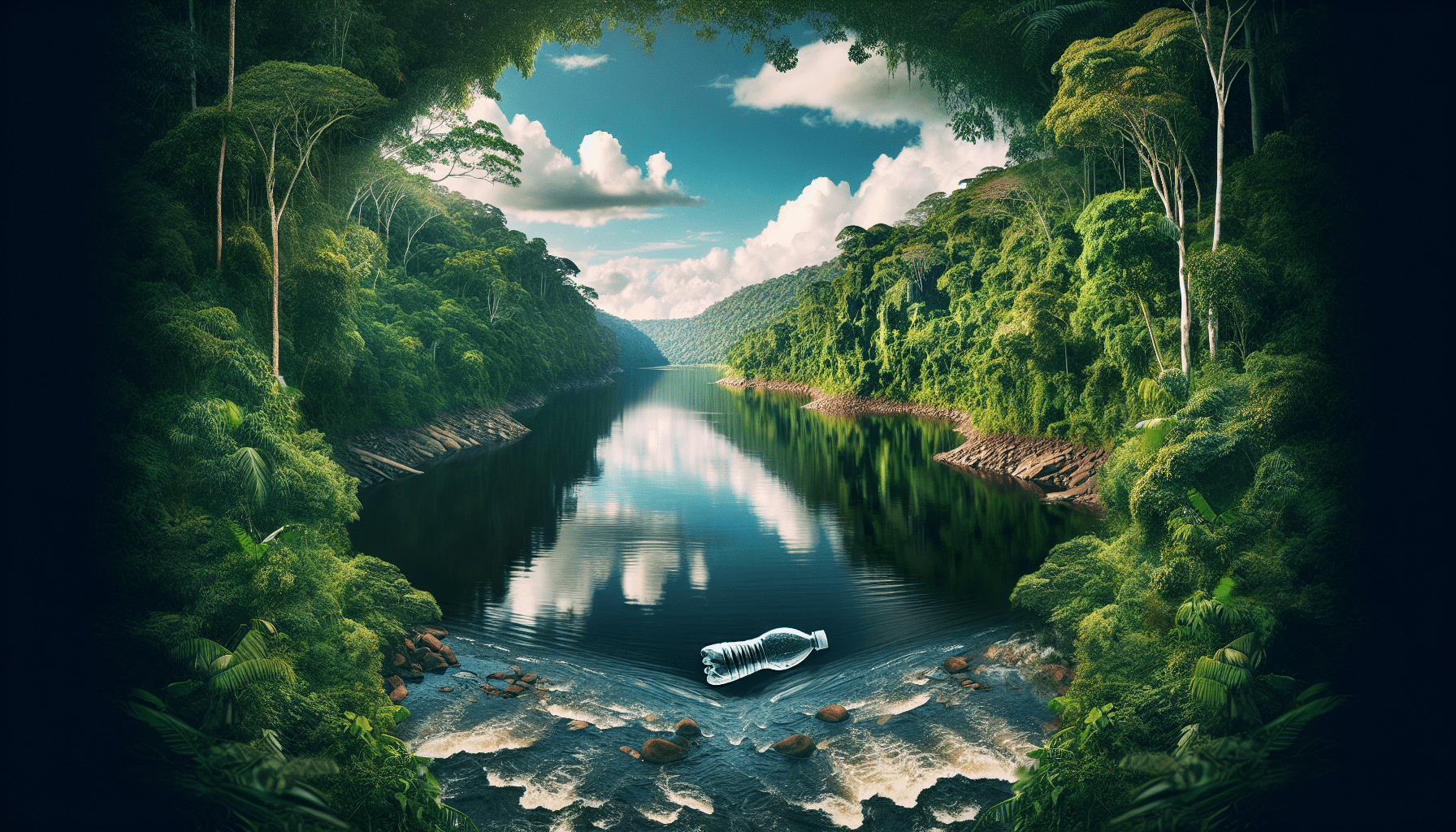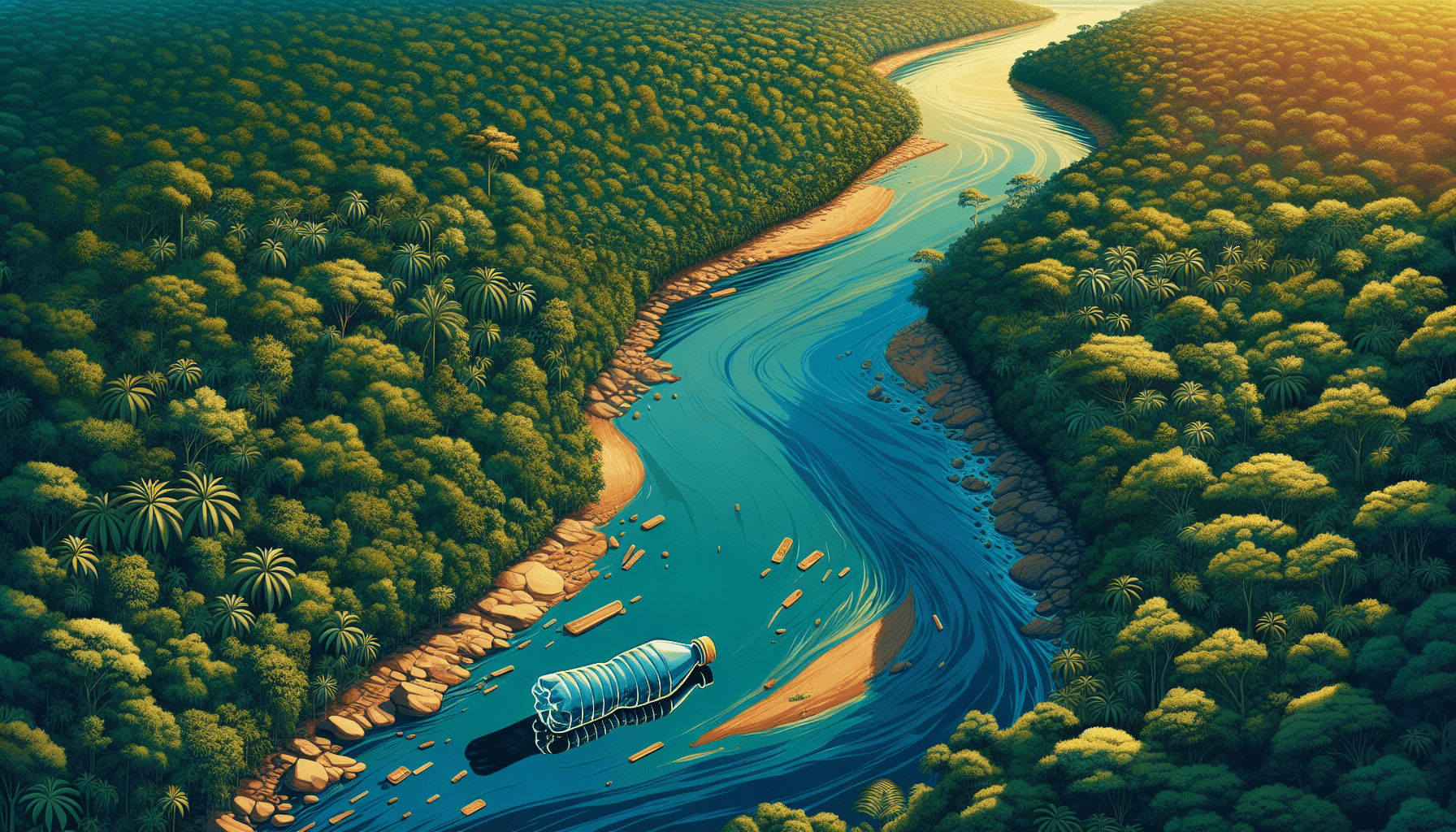
So, you’ve heard a lot about the majestic Amazon River and its rich biodiversity, but have you ever wondered about its well-being? Is the Amazon River heavily polluted? Well, let’s take a closer look.

Introduction
The Amazon River is a globally renowned natural wonder that stretches over 6,400 kilometers, making it the second longest river in the world. It flows through several South American countries, including Brazil, Peru, Colombia, and Bolivia. Known for its rich biodiversity and unique ecosystems, the Amazon River is vital for the wellbeing of both the local communities and the planet as a whole. However, the river faces significant pollution concerns that threaten its delicate balance and ecological integrity.
Background information about the Amazon River
The Amazon River originates in the Peruvian Andes and winds its way through the dense tropical rainforests of the Amazon basin before emptying into the Atlantic Ocean. It is a complex river system with numerous tributaries, many of which are also long and navigable. The river basin spans over 7 million square kilometers, providing a habitat for countless species of fauna and flora, some of which cannot be found anywhere else in the world.
Importance of the Amazon River
The Amazon River plays a crucial role in many aspects of life, both locally and globally. It sustains the livelihoods of millions of people living along its banks, providing them with drinking water, transportation, and a vital source of income through fishing and agriculture. The river is also recognized as the world’s largest carbon sink, helping to mitigate climate change by absorbing significant amounts of carbon dioxide from the atmosphere.
Overview of pollution concerns
Despite its immense value, the Amazon River is facing increasing pollution challenges. Industrial development, agricultural activities, illegal mining, and oil spills are some of the major contributors to the pollution of the river and its tributaries. These pollutants not only degrade the water quality but also have severe implications for wildlife, local communities, and the long-term ecological well-being of the region.

Causes of Pollution
Industrial pollution
Industrial activities, particularly in the mining and manufacturing sectors, release various toxic substances into the Amazon River. Discharge of untreated wastewater containing heavy metals, chemicals, and other harmful pollutants poses a significant threat to the river’s ecosystem. The industrial pollution often leads to the disruption of aquatic life, affecting the delicate balance of the food chain.
Agricultural pollution
The expansion of agricultural practices, such as soybean cultivation, cattle ranching, and palm oil production, along the Amazon River, has resulted in the extensive use of pesticides and fertilizers. Excessive application of these chemicals leads to water contamination as rainfall washes them into the river, causing damage to aquatic life and disrupting the ecosystems that rely on clean water.
Illegal mining
Illegal mining activities, particularly for gold and other precious minerals, have become a major source of pollution in the Amazon River. The use of mercury in the extraction process contaminates the water and sediments, harming aquatic organisms and threatening the health of local communities who rely on the river for their daily needs.
Oil spills
The extraction and transportation of oil in the Amazon region have led to several oil spills, causing significant damage to the river ecosystem. Oil spills contaminate the water, kill fish and other aquatic organisms, and disrupt the delicate balance of the river’s ecosystems. These spills also impact the livelihoods of local communities who depend on the river for fishing and agricultural activities.
Effects of Pollution
Threats to wildlife and biodiversity
The pollution of the Amazon River poses a grave threat to the unique biodiversity of the region. Contaminated water, coupled with habitat destruction, affects fish populations and other aquatic species that rely on clean water for their survival. Furthermore, pollutants in the river can enter the food chain, potentially harming larger mammals and birds that depend on the river’s resources.
Health risks for local communities
The pollution of the Amazon River directly impacts the health of the communities that depend on it for their daily needs. Chemical pollutants, heavy metals, and toxins in the water can lead to severe health issues, including gastrointestinal problems, neurological disorders, and even cancer. The lack of access to clean drinking water exacerbates these health risks, particularly in remote and impoverished communities.
Impact on indigenous communities
The pollution of the Amazon River disproportionately affects indigenous communities that rely on the river for their cultural practices, livelihoods, and spiritual beliefs. Traditional fishing techniques and the consumption of fish contaminated with heavy metals and toxins pose a threat to their way of life. The loss of biodiversity and disruptions to the ecosystem also undermine the cultural heritage and knowledge passed down through generations.
Long-term ecological damage
Pollution in the Amazon River has long-term consequences for the region’s ecological balance. The accumulation of pollutants over time contributes to the degradation of ecosystems, leading to the decline of certain species and the alteration of natural processes. This disruption can have cascading effects on the overall health of the river and its ability to sustain life.
Water Quality Assessment
Measurement of water quality
Water quality assessments are crucial for understanding and addressing pollution in the Amazon River. By measuring various parameters such as pH, temperature, dissolved oxygen, and concentrations of pollutants, scientists can evaluate the overall health of the river and identify areas of concern. Regular monitoring enables the implementation of targeted strategies to mitigate pollution and protect the river ecosystem.
Pollutants in the Amazon River
Studies have found a wide range of pollutants in the Amazon River, including heavy metals like mercury and lead, pesticides, fertilizers, petroleum hydrocarbons, and industrial chemicals. These pollutants are often present in high concentrations, surpassing safe levels for aquatic life and human consumption. The sources of these pollutants can be attributed to industrial discharges, agricultural runoff, and the illegal mining industry.
Comparisons with global standards
When comparing the water quality of the Amazon River with global standards, alarming discrepancies become apparent. The concentration of pollutants in the river exceeds acceptable levels established by international organizations, such as the World Health Organization and the Environmental Protection Agency. This places the Amazon River at risk of further environmental degradation and poses severe health risks to the communities relying on its waters.
Government Initiatives
Environmental regulations and policies
Governments in the Amazon region have recognized the urgent need to address pollution in the Amazon River. Various regulations and policies are being implemented to control industrial discharges, regulate land use, and enforce sustainable practices. The establishment of protected areas and the enforcement of environmental impact assessments are steps in the right direction, aiming to reduce pollution and safeguard the river’s ecosystem.
Collaboration with international organizations
The governments of Amazonian countries have also sought collaboration with international organizations to combat pollution in the Amazon River. Partnerships with entities like the United Nations Environment Programme (UNEP) and the World Bank have helped in implementing environmental programs and securing funding for conservation and restoration efforts. These collaborations facilitate knowledge-sharing and the exchange of best practices for controlling pollution.
Conservation efforts
In addition to regulations and collaborative efforts, governments are investing in conservation projects aimed at restoring and protecting the Amazon River. Reforestation initiatives, habitat restoration, and the establishment of protected areas contribute to improving the overall health and resilience of the river’s ecosystems. These efforts are critical in mitigating pollution impacts and preserving the river’s unique biodiversity for future generations.
Challenges to Remediation
Lack of resources and funding
One of the main challenges in remediating pollution in the Amazon River is the lack of adequate resources and funding. The scale of pollution and its far-reaching effects require significant financial investments to implement effective solutions. Limited budgets and competing priorities make it challenging for governments to allocate sufficient funds to address pollution adequately.
Difficulties in enforcement
Enforcing environmental regulations and holding polluters accountable is a formidable task. The vastness of the Amazon River and its remote locations make monitoring and enforcement a logistical challenge. Limited manpower, corruption, and the lack of effective governance in some areas contribute to weak enforcement mechanisms. Strengthening enforcement capabilities and increasing penalties for violators are necessary steps to combat pollution effectively.
Socioeconomic factors
Poverty and socioeconomic disparities play a role in the perpetuation of pollution in the Amazon River. Communities may resort to unsustainable practices, such as illegal mining or unregulated agriculture, to meet their immediate economic needs. Additionally, lack of access to education and healthcare hinders awareness about the consequences of pollution, exacerbating the problem further.
Political and bureaucratic challenges
Navigating the political landscape and bureaucratic processes can present significant challenges in implementing effective pollution control measures. Competing interests, conflicts of jurisdiction, and political will influence decision-making processes. Achieving consensus among various stakeholders and aligning priorities is essential to overcome these challenges and ensure the effective management of pollution in the Amazon River.
Community Involvement
Local initiatives and activism
Community involvement and grassroots initiatives play a vital role in addressing pollution in the Amazon River. Local communities are increasingly organizing themselves to raise awareness about the issue, advocate for sustainable practices, and hold polluters accountable. These initiatives help bridge the gap between communities, government agencies, and international organizations, fostering a collaborative approach to pollution control.
Education and awareness programs
Educational programs focused on pollution and its consequences are crucial in preventing further degradation of the Amazon River. Informing local communities about the impacts of pollution on their health, biodiversity, and livelihoods empowers them to demand change and make informed decisions. Awareness campaigns, workshops, and school programs help disseminate crucial information and inspire communities to adopt sustainable practices.
Support for sustainable practices
Promoting sustainable practices is key to reducing pollution in the Amazon River. Supporting and incentivizing sustainable agriculture and fishing techniques that minimize chemical usage and prevent overfishing can help protect the river’s resources. Providing alternative livelihood options, such as eco-tourism, also encourages communities to embrace sustainable development practices while preserving the integrity of the river and its surroundings.
Future Prospects
Technological advancements for pollution control
The development of innovative technologies offers hope for effectively controlling pollution in the Amazon River. Implementing advanced wastewater treatment systems, remote sensing technologies for pollution monitoring, and techniques for cleaning up oil spills can help mitigate pollution impacts. Research and development in this field must be encouraged to find sustainable and cost-effective solutions.
International cooperation for conservation
The importance of international cooperation in preserving the Amazon River cannot be overstated. Governments, non-governmental organizations, and international institutions must collaborate on a global scale to address the pollution issues that affect the river. Sharing knowledge, expertise, and financial resources can contribute to developing comprehensive strategies and implementing effective programs for pollution control and conservation.
Sustainable development projects
Emphasizing sustainable development projects can pave the way for a cleaner and healthier future for the Amazon River. By promoting economic activities that are environmentally friendly and socially responsible, such as eco-tourism, agroforestry, and renewable energy initiatives, communities can have a more sustainable relationship with the river. Balancing economic development with environmental stewardship is essential to ensure the long-term well-being of the Amazon River.
Conclusion
The Amazon River is an invaluable natural resource that deserves urgent attention to combat pollution and protect its unique ecosystems. Industrial pollution, agricultural practices, illegal mining, and oil spills continue to threaten the river’s health, as well as the livelihoods of local communities and the stunning biodiversity found within its waters. While challenges remain, ongoing government initiatives, community involvement, and international cooperation offer hope for reversing the harmful trend. It is crucial for all stakeholders to take action and address the issue of pollution in the Amazon River to secure a brighter and cleaner future for this iconic waterway.



